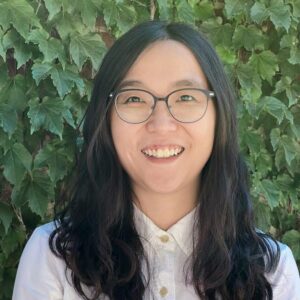Runzi Wang is a transdisciplinary researcher who studies change in natural and urban environments across space and over time, with the objective of driving positive change with ecological planning and design strategies. Combining technologies such as big data, machine learning, remote sensing, and spatial statistics, her primary research explores how land cover change and urban development pattern influence stream water quality and stormwater quality at the watershed basis, together with various environmental, climatic, and sociocultural factors. By enhancing the interpretability of machine learning in its application to landscape architecture, the most innovative part of her research is to uncover the nonlinear, interacted relationships between environmental, technological, and sociocultural dimensions of landscape systems.
What are some of your most interesting projects?
- I conducted the first continental-scale urban stream water quality study funded by MIDAS. We applied geospatial analysis to investigate the characteristics of the built environment (e.g., building footprint, street length, land use spatial pattern) associated with urban stream water quality, the social inequities regarding exposure to stream water contamination, as well as the spatial variations in the above processes. We developed data integration protocols for data from remote sensing products, in-situ observations, and the US Census Bureau. Using Bayesian hierarchical models, we concluded that watersheds with a higher percentage of minorities are associated with higher nutrient pollution, with the relationship being more significant in the American Northwest.
- I investigated how land use planning and best management practices mitigated climate change effects on Lake Erie’s water quality. With the integration of longitudinal watershed land cover, agricultural, and climatic data from 1985-2017, we found that no-tillage and reduced tillage management were effective mitigation strategies that could decrease water quality sensitivity to climate change. We plan to advance this work by fusing remote sensing-based bloom detection and process-based simulation to investigate how climate change, land cover change, and anthropogenic activities will impact the eutrophication of Lake Erie.
How did you end up where you are today?
I have a highly interdisciplinary background, receiving training in architecture, landscape architecture, urban planning, statistics, hydrology and water quality, and broader social science topics. This forms my research topic to study the relationships between people, land, and water. Specifically, I study the interconnectedness between people living in the watershed, the land use and urban form of the watershed’s built form, the resulting water quality conditions, and the ecosystem services urban streams provide for people. This background also leverages many different methodologies in my work, including data science, hydrological models, social science methods, and so on. In addition, the most important thing about my research journey is that I have a few excellent friends/researchers who help me a lot on my way and make my research life inspiring and delightful most of the time.
Accomplishments and Awards
- 2021 Propelling Original Data Science (PODS) Grant Award: Data Science Approach towards a Socio-ecological Framework for the Investigation of Continental Urban Stream Water Quality Pattern
